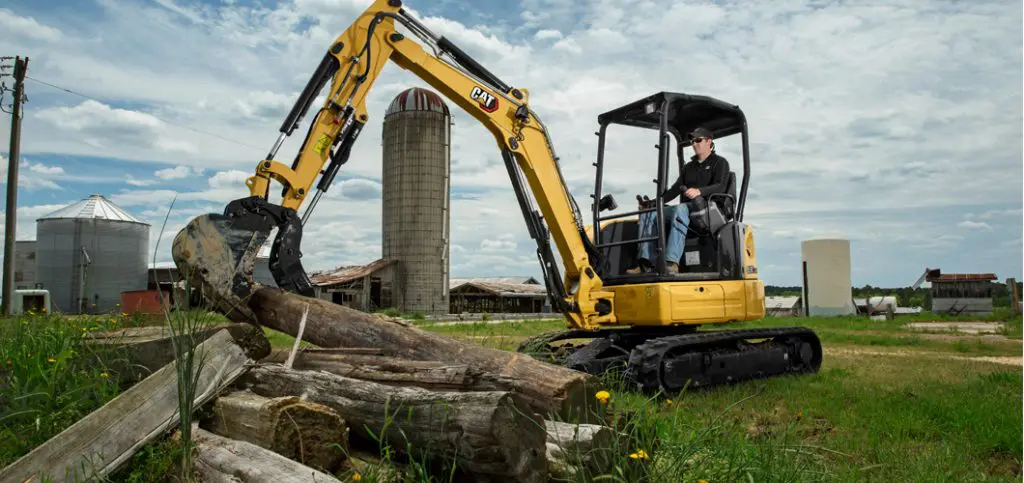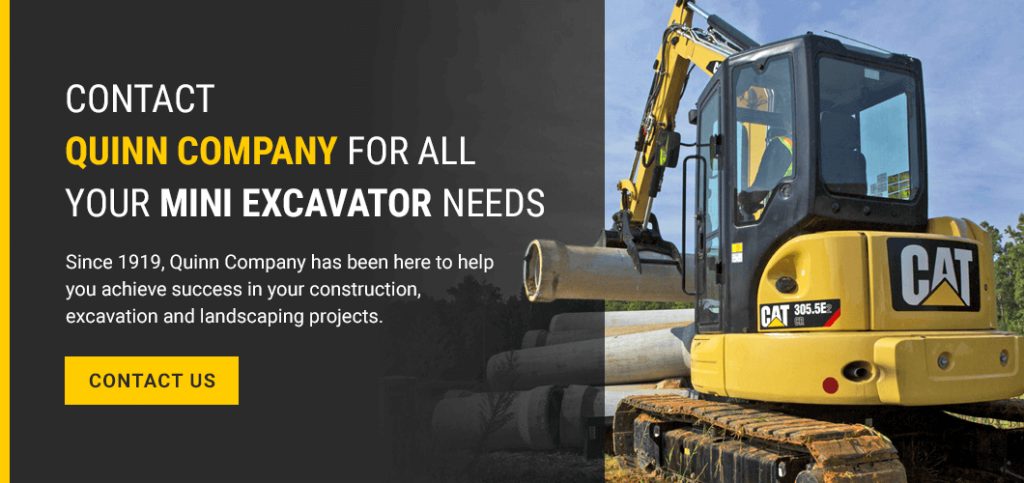Cat Mini Excavators deliver high performance, durability and versatility to work in a variety of applications. However, to be productive, your operators need to be safe.

Below are a few essential mini excavator safety tips to follow on the job site, to keep your operators safe and your project on track.
1. Wear the Proper Personal Protective Equipment
The right personal protective equipment (PPE) helps ensure operator safety. Wear a reflective vest to make yourself more visible and durable work boots to protect your feet. You should also wear a hard hat and clear or tinted safety glasses. For some applications, you’ll want to protect your hands with gloves and wear ear protection.
2. Maintain Three Points of Contact When Entering and Exiting
When you’re entering or exiting your mini excavator, be sure to maintain three points of contact with the machine at all times. Those three points of contact can be either both feet and a hand or both hands and a foot. Maintaining these contact points helps improve your stability and reduces the chance of slips and falls.
3. Wear Your Seat Belt
Even though a mini excavator doesn’t move nearly as fast as a car, wearing your seat belt is still essential. The retractable seat belt, a feature built into all Cat® mini excavators, helps protect you if the machine overturns or collides with something.
4. Use the Safety Interlock
Cat mini excavators come equipped with a safety interlock. The safety interlock prevents you from bumping into levers and accidentally moving the excavator in a way that would injure you as you exit the machine. Raising the safety interlock gives you more space to get out and locks the mini excavator’s components in place, ensuring you can exit safely.
5. Use the Camera Feature
Some mini excavators come with cameras for enhanced safety. You can use the wide-angle shot or switch to a close-up view of the area behind the machine. The camera feature helps you view the area around the mini excavator to avoid people or colliding with nearby objects.
6. Maintain Proper Blade Positioning While Digging
For balancing and safety reasons, proper blade positioning with your mini excavator is essential. With a mini excavator of more than 8 tons, you’ll generally want to keep the blade in front. But with smaller mini excavators, particularly those weighing less than 3 tons, positioning the blade in the back can provide much-needed stability and balance.
With smaller excavators, if you try to dig with the blade positioned in the front, the cab will tip backward as the bucket digs into the soil. In this case, it’s best to move the blade to the back of the mini excavator. It can grip the earth to provide stability and prevent the cab from tipping as you dig.


